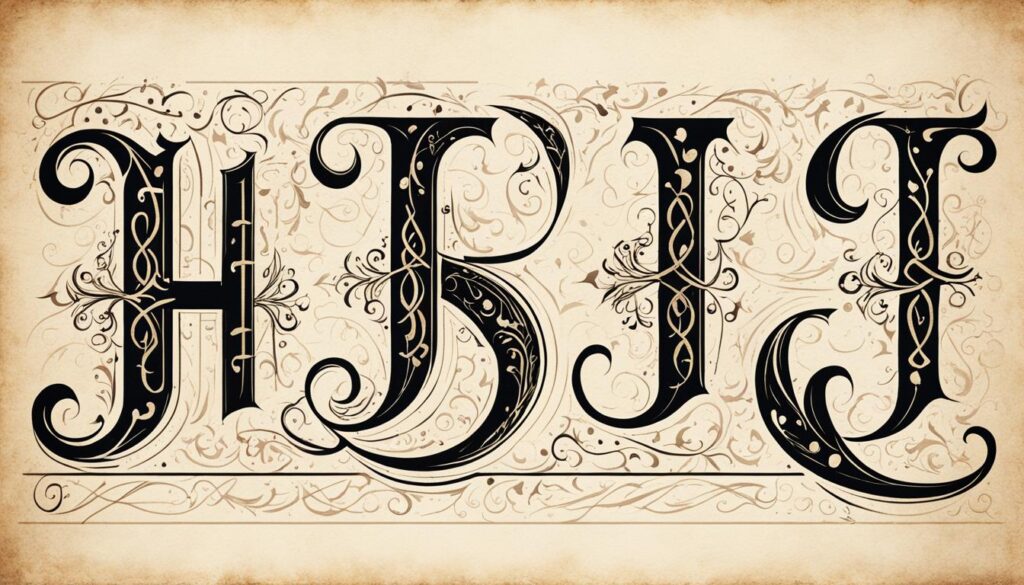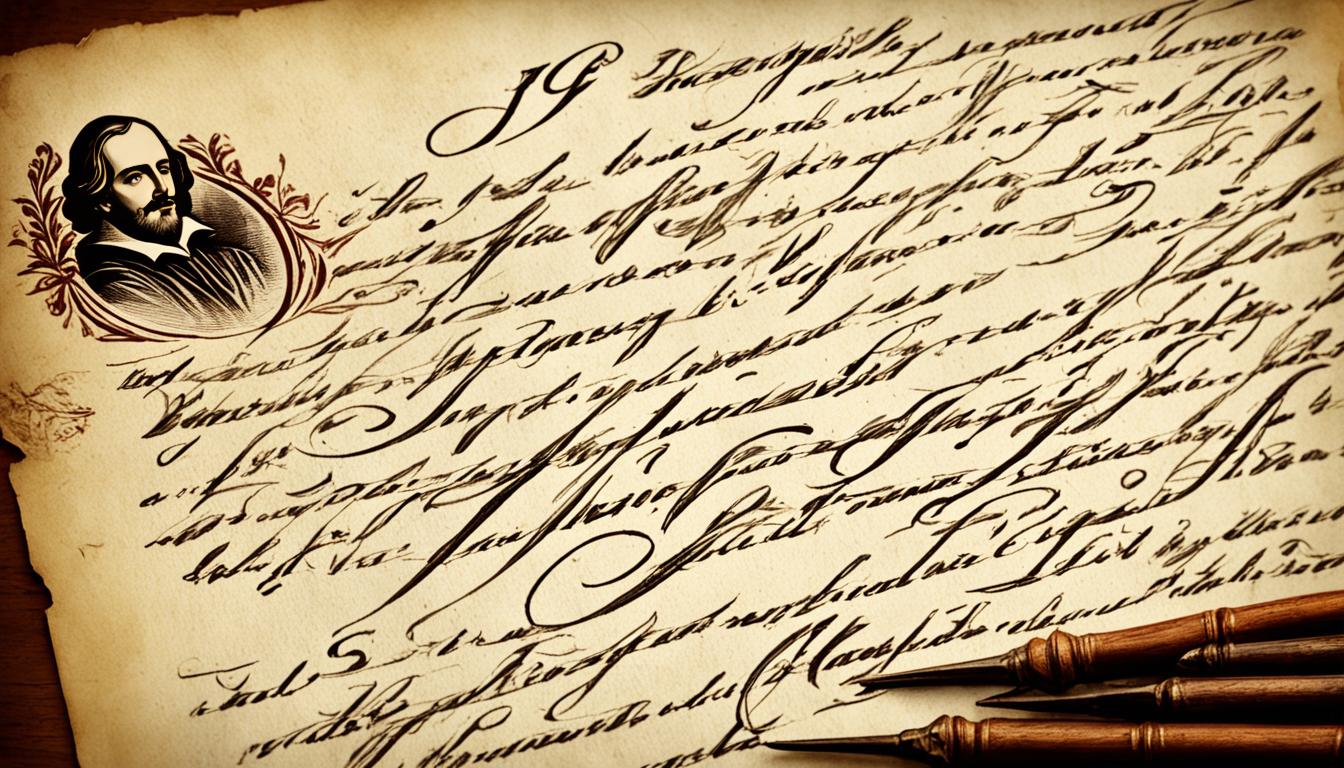The modern English alphabet didn’t always include “J” as a distinct letter. In Shakespeare’s time, “I” and “J” were often used interchangeably. “I” often replaced the “J” sound in many words.
This practice continued until after Shakespeare’s era. The separation of “I” and “J” happened gradually. It took time for “J” to become its own letter.
Early editions of “Romeo and Juliet” show this old spelling practice. The 1597 edition used “Iuliet” instead of “Juliet”. This proves that “J” wasn’t yet a separate letter.
The King James Bible, published in 1611, helped “J” gain recognition. However, it still wasn’t used consistently. Names like “Jesus” and “Joseph” were spelled “Iesus” and “Ioseph”.
The 1629 edition of the King James Bible used “J” more regularly. This marked a shift in the letter’s status. It signaled “J’s” growing acceptance in the English alphabet.
Key Takeaways
- The letter “J” was not considered a distinct letter from “I” until after Shakespeare’s time.
- Early editions of Shakespeare’s works, such as “Romeo and Juliet,” used “I” in place of “J” sounds.
- The King James Bible played a role in the gradual acceptance of “J” as a separate letter.
- The English alphabet evolved over time, with the letter “J” being one of the last additions.
- Understanding the history of the letter “J” provides insight into the development of the English language.
The Origins of the Letter “J” in Ancient Roman Times
The letter “J” has a rich history dating back to ancient Roman times. In classical Latin, “I” was both a vowel and consonant. Over time, the consonant “I” evolved into the “J” we know today.
Roman numerals sometimes used a swash to mark the end of a sequence. For example, 13 might appear as “XIIJ” instead of “XIII”. This practice shows the early stages of “J” as a separate character.
Romans pronounced the consonant “I” as “w” or “oo”. Before vowels, it sounded like “w”. The phrase “VIVAT BRVTVS” was said as “wee-watt broo-tooss” in classical Latin.
During the medieval era, the consonant “I” kept changing. It slowly became the distinct “J” we use today. This shows how ancient Roman writing shaped modern languages.
The journey of “J” reflects the complex growth of our alphabet. It highlights how European languages have changed over time. Ancient writing systems continue to influence our modern language.
The Evolution of “I” and “J” in Medieval Era
Middle Ages scribes used angular V to start words and round U inside or at the end. This led to spellings like “VALOUR” and “VSEFUL,” which didn’t match word sounds.

In the late 1300s, people started to distinguish between “v” and “oo” sounds. The angular v represented “v,” while the round u denoted “oo.” This distinction took time to catch on.
Standardization of this practice occurred in the 1600s and 1700s. The letter “J” changed in late imperial times, with its “y” sound becoming the modern “J” sound.
Medieval German began distinguishing between “I” and “J.” This spread to Romance languages, where “I” or “J” represented “dj” and “ee” sounds. These sounds had changed greatly from their original pronunciation.
J and I Letter Distinction in the English Language
The letter distinction between “I” and “J” wasn’t set until the King James Bible in 1629. Before this, the letters were often used interchangeably. This caused confusion in written texts.
Scholars began suggesting “J” as the consonant version of “I” in the late 15th century. The adoption of this change varied across Europe. Some regions took longer to adapt.
The random use of “I” and “J” in old texts wasn’t due to forgetfulness. It simply reflected that the distinction wasn’t widely established yet.
In English, the change took hold in the early 17th century. The King James Bible helped popularize this distinction. It was widely read throughout the English-speaking world.
The journey to differentiate “I” and “J” was gradual. It was influenced by scholarly works and regional differences. The King James Bible had a big impact. This distinction is now crucial for clear writing.
The Phonetic Journey of the Letter “J”
The letter “J” has a fascinating history. It started as a Phoenician pictogram of a leg with a hand. This symbol represented a sound like the Y in “yes.”
Semitic languages adopted this pictogram for “arm.” The word began with a J sound, similar to the Y in “yes.”
The letter “J” found its unique identity in the 16th century. In 1524, Gian Giorgio Trissino, an Italian grammarian, separated the sounds of “I” and “J.”
Trissino’s work was crucial. He identified the soft J sound, as in “jam.” This helped him translate the Greek “Iesus” to the Modern English “Jesus.”
Trissino’s distinction created the current J sound. It set “J” apart from “I” in English. The letter evolved from a simple pictogram to a unique sound.

Leave a Reply